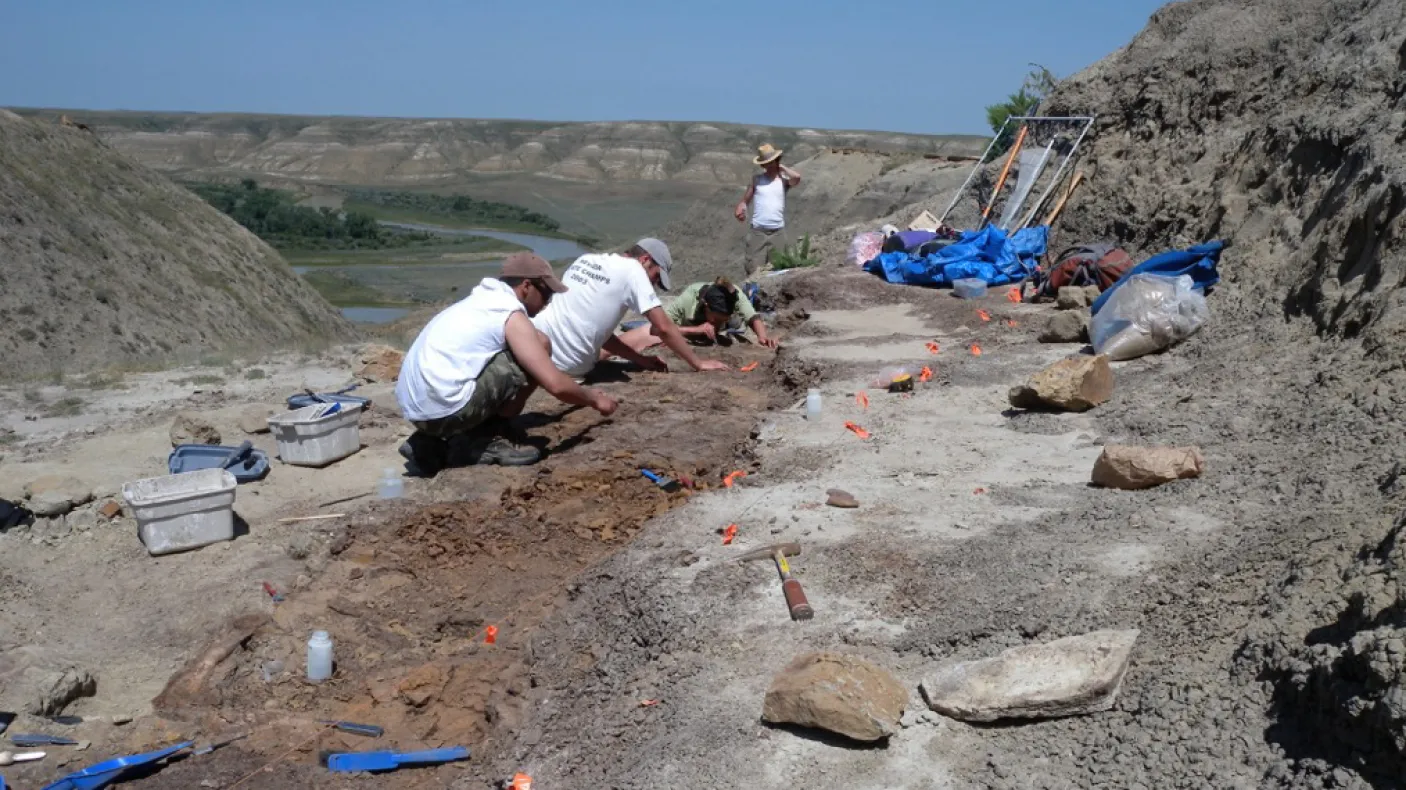Southern Alberta Dinosaur Project
Categories
Southern Alberta Dinosaur Project
The Southern Alberta Dinosaur Project (SADP), designed to fill in gaps in our knowledge of Late Cretaceous dinosaurs and study their evolution, is lead by palaeontologists David C. Evans (Royal Ontario Muserum) and Michael J. Ryan (Cleveland Museum of Natural History). This project focuses on the palaeontology of some of oldest dinosaur-bearing rocks in Alberta and the neighbouring rocks of northern Montana that are of the same age.
Drawer
The geology and paleontology of the Late Cretaceous of Alberta has been intensely studied, but directed in large part toward regions with large amounts of its easily accessible outcrop of fossil-rich rocks. The region in and around Dinosaur Provincial Park, which expose rocks from the upper Belly River Group, has been particularly well sampled by paleontologists, with over 400 articulated or associated dinosaur skeletons having been collected from this locality in approximately 100 years.
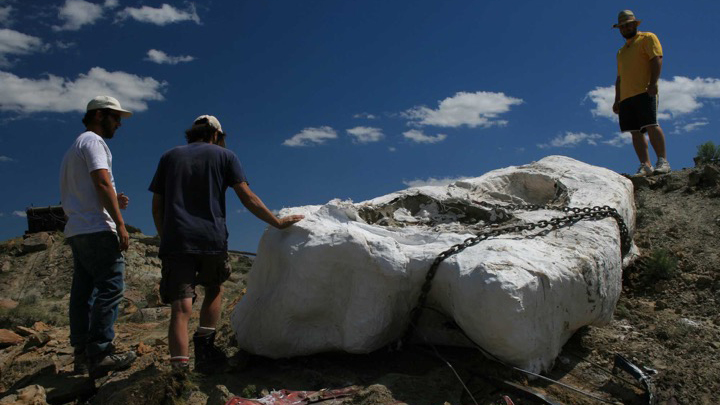
New research reveals significant faunal turnovers with the most fossiliferous series of rock layers, the Dinosaur Park Formation, which may be related to sea-level rise of the Western Interior seaway and associated environmental change. From this data, a habitat-tracking model makes a number of predictions regarding the distribution of individual genera and species, and how rates of evolution might change with habit-area changes as the seaway rose and fell. The high species turn over rates and chance discoveries suggest that the poorly known sediments of the lower Belly River Group may contain an entirely new and distinctive dinosaur fauna. Due to poor sampling in regions outside of Dinosaur Provincial Park, further fieldwork is required to test these hypotheses and determine the nature of the faunal shifts, and provide a better understanding of dinosaur faunal dynamics and evolution leading up to the end-Cretaceous extinction event.
The vertebrate fossils of the Milk River region of extreme southern Alberta have received relatively little attention, but this area contains some of the oldest dinosaur-bearing sediments in Alberta (85-75 million years old). Small collections made by former ROM scientists Lorris Russell (in 1936, 1949-50) and Gordon Edmund (in 1966-67) are noteworthy, along with work by the Royal Tyrrell Museum more recently. These indicate considerable potential for more discoveries in this area. Fossiliferous strata of the lower Belly River Group are particularly well exposed adjacent to the Milk River, over 125 km southeast of Dinosaur Provincial Park. This area contains some of the oldest dinosaur-bearing sediments in Alberta (Foremost, and lower Oldman formations), as well as significant portions of the Oldman and Dinosaur Park formations that are time-equivalent to the section exposed at Dinosaur Provincial Park.
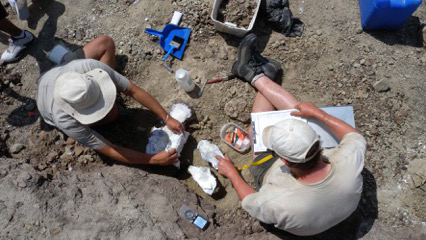
The Southern Alberta Dinosaur Project (SADP) is a long-term fieldwork project that focuses on the Milk River region of southern Alberta, near the Montana border, and is part of a multi-year collaborative field research project organized and initiated with Dr. Michael Ryan from the Royal Tyrrell Museum. This area contains some of the oldest dinosaur-bearing sediments in Alberta, and has potential to reveal new dinosaur species and to contribute to our knowledge of a poorly known time in Late Cretaceous dinosaur evolution.
The Southern Alberta Dinosaur Project (SADP) aims to execute a complete paleontological survey of this area, with the goals of compiling a detailed biostratigraphic framework for this region that can be compared directly to the datum now in place for the Dinosaur Provincial Park locality and to document the poorly known dinosaur fauna of the lower half of the Belly River Group and the Milk River Formation.
Since 2004, when the project started, the decade-long project has been particulary successful. It has resulted in the collection of over 3000 new fossil specimens, and the discovery of numerous new taxa. To date, one new species of turtle and sixe new species of dinosaur have been formally described, with several more news being worked on currently.
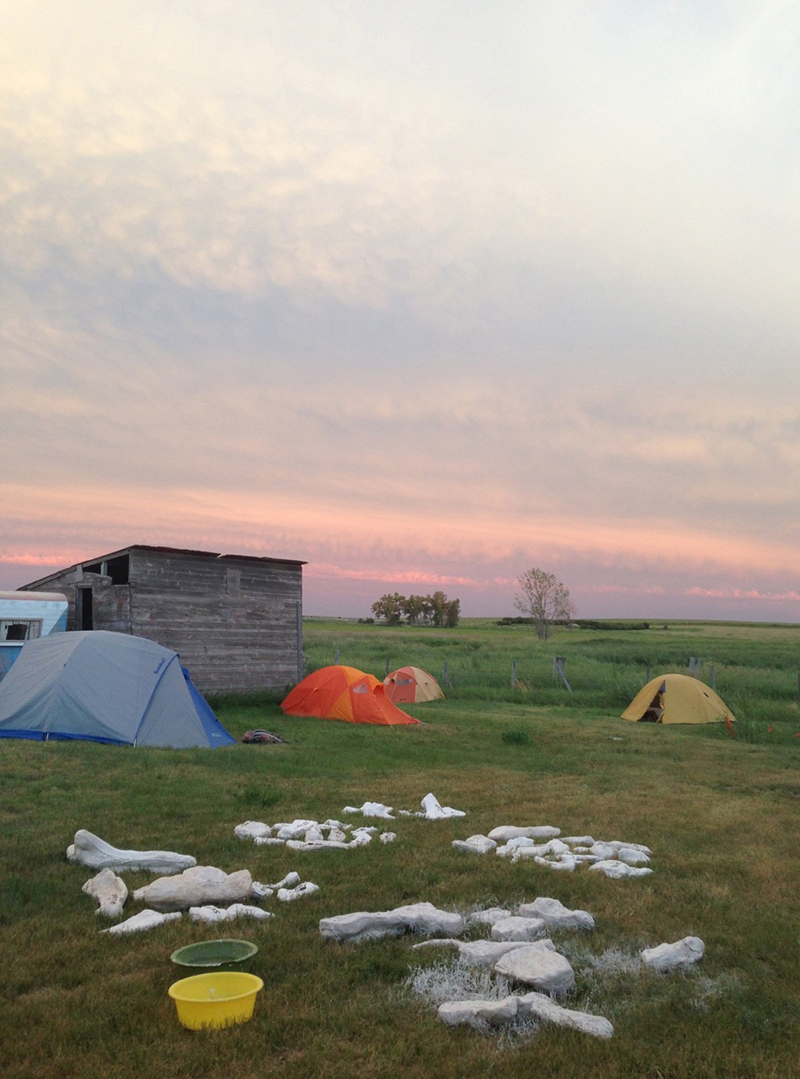
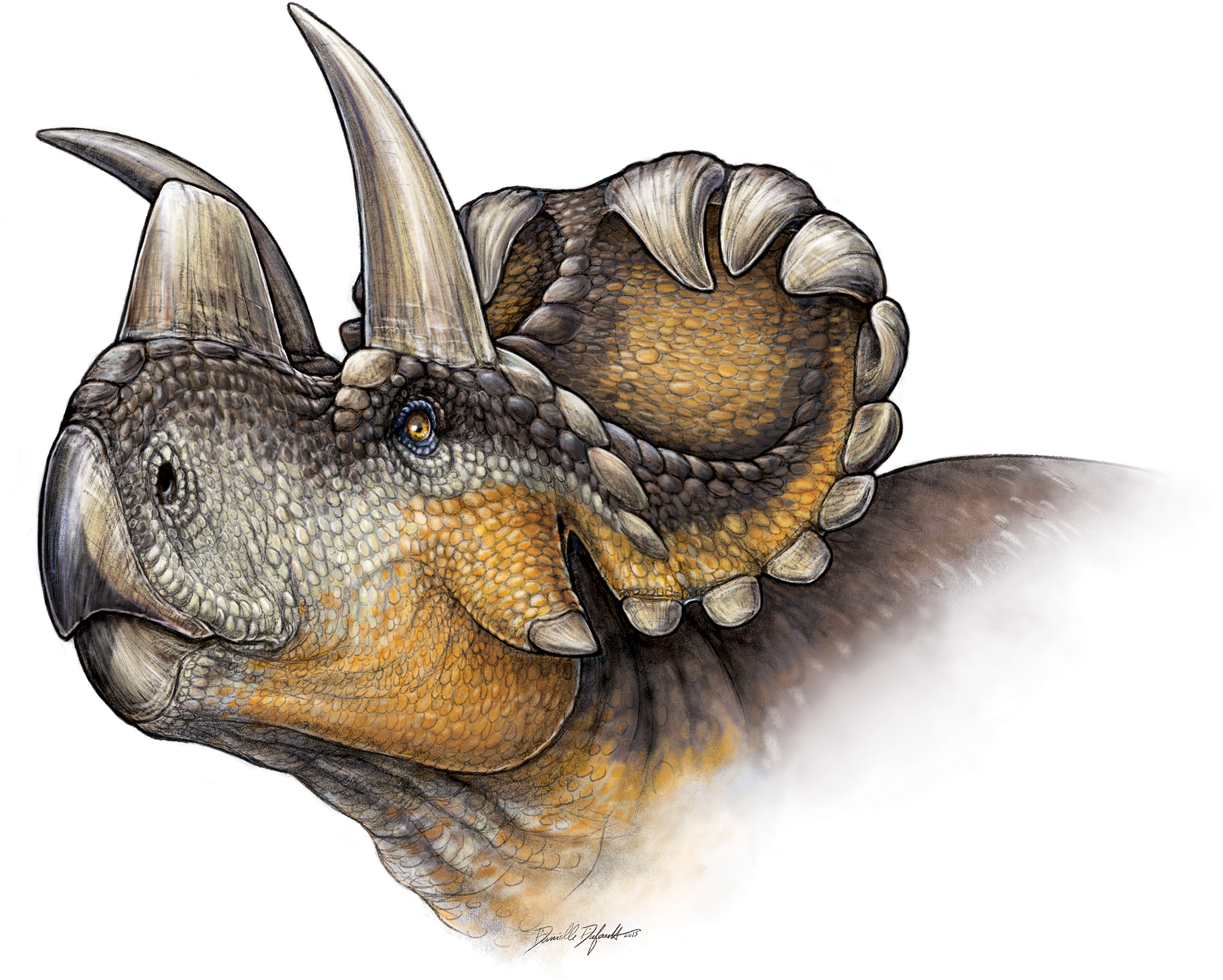
Latest Discovery: Wendiceratops pinhornensis
(Ceratopsia) Evans and Ryan 2015.
Read the Press Release
Other Dinosaurs:
- Mercuriceratops gemini (Ceratopsia) Ryan, Evans, Currie, and Loewen 2014.
- Acrotholus audeti (Pachycephalosauridae) Evans, Schott, Larson, Brown, and Ryan 2013.
- Albertadromeus syntarsus (Ornithopoda) Brown, Evans, Ryan, and Russell 2013.
- Unescoceratops koppelhusi (Ceratopsia) Ryan, Evans, Currie, Brown, and Brinkman 2012.
- Gryphoceratops morrisoni (Ceratopsia) Ryan, Evans, Currie, Brown, and Brinkman 2012.
- Xenoceratops foremostensis (Ceratopsia) Ryan, Evans, and Shepherd 2012.
Summerasaurus Part V: The Badlands, September 2, 2011
Recent Publications
- 2015D. B. Brinkman, M. Rabi, M. J. Ryan, D. C. Evans , "Marine Turtles from the Late Cretaceous of Alberta, Canada", Canadian Journal of Earth Sciences
- 2015David C. Evans, Michael J. Ryan, "Cranial Anatomy of Wendiceratops pinhornensis gen. et sp. nov., a Centrosaurine Ceratopsid (Dinosauria: Ornithischia) from the Oldman Formation (Campanian), Alberta, Canada, and the Evolution of Ceratopsid Nasal Ornamentation", PLOS | One , (Cranial Anatomy of Wendiceratops pinhornensis gen. et sp. nov., a Centrosaurine Ceratopsid (Dinosauria: Ornithischia) from the O)External link, opens in a new tab
- 2014D. Larson, N. E. Champione, C. M. Brown, M. J. Ryan, "Hadrosauroid material from the Santonian Milk River Formation of southern Alberta, Canada. In The Hadrosaurs: Proceedings of the International Hadrosaur Symposium (D. A. Eberth and D. C. Evans, eds)", Indiana University Press
- 2014D. C. Evans, C. T. McGarrity, M. J. Ryan, ". A skull of Prosaurolophus maximus (Hadrosauridae), and the spaciotemporal distribution of faunal zones in the Dinosaur Park Formation, Alberta. In The Hadrosaurs: Proceedings of the International Hadrosaur Symposium (D. A. Eberth and D. C. Evans, eds)", Indiana University Press
- 2014M. J. Ryan, D. C. Evans , P. J. Currie, M. A. Loewen, "New chasmosaurine from northern Laramidia Expands Frill Disparity in Ceratopsid Dinosaurs.", Naturwissenschaften 6,505-512, (A new chasmosaurine from northern Laramidia expands frill disparity in ceratopsid dinosaurs)External link, opens in a new tab
- 2013D. C. Evans , R. Schott, D. Larson, C. M. Brown, M. J. Ryan, "The oldest North American pachycephalosaurid and the hidden diversity of small-bodied ornithischian dinosaurs", Nature Communications , (The oldest North American pachycephalosaurid and the hidden diversity of small-bodied ornithischian dinosaurs)External link, opens in a new tab
- 2012M. J. Ryan, K. Shepherd, "A new ceratopsid from the Foremost Formation (middle Campanian)", Journal of Earth Sciences ,1251–1262, (A new ceratopsid from the Foremost Formation (middle Campanian) of Alberta)External link, opens in a new tab
- 2009R. K. Schott, D. C. Evans , T. E. Williamson , T. D. Carr, M. B. Goodwin, "The anatomy and systematics of Colepiocephale lambei (Dinosauria: Pachycephalosauridae)", Journal of Vertebrate Paleontology 3,771-786
- 2007D. C. Evans , R. R. Reisz, "Anatomy and relationships of Lambeosaurus magnicristatus, a crested hadrosaurid (Dinosauria: Ornithischia) from the Dinosaur Park Formation", Journal of Vertebrate Paleontology 2,373-393
- 0D. W. Larson, N. R. Longrich, D. C. Evans , M. J. Ryan, "A new species of Neurankylus from the Milk River Formation (Cretaceous: Santonian) and a revision of N. eximius", . Gafney Turtle Symposium Volume
- 0K. Chiba, D. C. Evans , M. J. Ryan, D. A. Eberth, D. Braman, Y. Kobayashi, "Taphonomy of a Centrosaurus apertus (Dinsoauria: Ceratopsidae) bonebed from the Oldman Formation of Alberta, Canada. ", Palaios
- 0D. C. Evans, M. J. Ryan, "A new centrosaurine from the Oldman Formation, Alberta, Canada and the evolution of nasal ornamentation in Ceratopsidae", PLoS ONE
